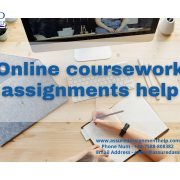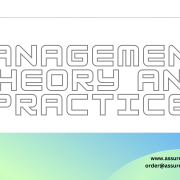Assignment 3: Clinical Case Conference Report
Cholecystitis (References 17)
Introduction:
The client is 66 years old lady who lives in Goolwa with her son in house. Son is full time student and work as casual pool.
According to (Erikson’s lifespan theory) she is in stage 8 for psychological development, where people reflect on their own life and experience satisfaction or deep regret. If people are successful they fell wisdom and completeness but failure on this stage could led depression, hopeless.
Miss A is a single mom born in Adelaide, who is independent with her activities of daily living and mobility.
Mrs. A is catholic by religion and has private health cover with BUPA. She is a Social drinker, ex-smoker and used to smoke 1 pack of cigarettes per day, however, she left smoking 2 years ago.
Situation:
- Miss A referred to ED by her GP from Goolwa medical centre with abdominal pain R) Lower quatrains, BNO 7 days. She was presented with her son at 19:40 pm. The client was admitted to the Lyell MacEwan hospital ED on 24th of September 2018. As per her blood results and CT abdominal + Pelvis, she was diagnosed with Cholecystitis. Patient came to our ward for Lap cholecystectomy (gallbladder removed).
Clinical background:
- (2016) Diverticulitis – where small pockets or pouches develop in the wall of the bowel is a very common condition that affects the large intestine (bowel), mainly affecting those over 50 who have a low-fibre diet?
- (07/03/2018) Rheumatoid arthritis – the immune system targets the lining of the joints, causing inflammation and joint damage such as the joints in the hands and feet, the hips and knees can also be affected.
- Panadol osteo 665mg tablet – 2 tablets 3 times a day_ It is an Immediate release and a sustained release dose to help manage osteoarthritis. It can provide long-lasting relief from persistent pain. Use minor to moderate pain, which Works by stopping pain signal in a brain. Side effect N/V, constipation.
- (2016) Hypercholesterolemia – an excess of cholesterol in the bloodstream, which is high fat or lipid levels in blood. Unsaturated fat is good such as almond. Cashews, canola or olive oil, Avogadro.
- Rosuvastatin 40mg tablet- 0ne tablet a day with meal – it is an anti cholesterol tablet. Works by reduce your LDL (low-density lipoproteins bad) cholesterol levels and increase your HDL (good) cholesterol levels by decrease levels of triglycerides (fats in your blood) to prevent heart attack or stroke. Side effects memory loss, confusion, N/V.
Cause of Cholecystitis (Lee & kwang et al. 2011)
(Waniek et al. 2018; Brand 2018) Obese and women are in great risk because higher levels of cholesterol in their bile, which can cause gallstones.
Table 1. Risk factors for development of cholelithiasis
Non-modifiable risk factors
- Age over 40 years
- Female
- Ethnicity
- Crohn’s disease
- Liver disease
Modifiable risk factors
- Excessive calorie intake
- Obesity
- Metabolic syndrome
- Type II diabetes mellitus
- Insulin resistance
- Dyslipidaemia
- Excessive weight loss
Complications in post Laparoscopic cholecystectomy
cholecystectomy. Laparoscopic cholecystectomy, also known as minimally invasive cholecystectomy, is performed through 4 small incisions with use of a camera to visualize the inside of the abdomen and long tools to remove the gallbladder. Surgery is done under anesthesia, and patients are asleep throughout the entire procedure.
Most patients go home on the day of or the day after surgery. Patients can return to eating their usual meals at home. Mild to moderate pain is common for a few days and can be managed with pain medications as prescribed. Dressings on the incisions can typically be removed the day after surgery, at which time patients can resume regular showers, but some incisions may require special care as instructed by the surgeon. A few people may experience diarrhea after cholecystectomy, which goes away after a few weeks or months in most people.
Complications after laparoscopic cholecystectomy are rare but can be serious when structures near the gallbladder are damaged. One of these structures is the common bile duct, which is the main tube that drains bile from the liver and gallbladder to the small intestine. Damage to the common bile duct or other biliary ducts can cause leakage or obstruction of bile flow and has symptoms of abdominal pain, fever, and yellowing of skin, known as jaundice. These symptoms can also be caused by a gallstone that is left behind in the bile duct. Bleeding from a blood vessel near the gallbladder can sometimes occur. Most bleeding stops on its own, but rarely, persistent bleeding requires intervention. After cholecystectomy, patients who experience worsening pain, fever, chills, nausea, vomiting, or jaundice should see a doctor.
Cure of patient condition _ more vulnerable to progress other health problems due to age and removed gallbladder.
(Stephanie et al. 2018) & (Gastrointestinal Nursing 2018)
- Bile help absorb fats and fat cycle vitamins, regulate cholesterol, balance hormones, and lubricate the colon, prevent gallstone.
- Balance cholesterol – cholesterol is necessary to building of hormone especially stress hormone and other hormone. Brain, nerve need cholesterol but bile need for breakdown free cholesterol in order to maintain cholesterol level. Cholesterol will imbalance without bile.
- Toxins: – Toxins travel through the bile duct then bile duct breakdown or elimination toxins. Without bile continue to build up toxins in the body.
- Thyroid_ (Thyroid hormone) T4 converted to T3 with help of liver and gallbladder so without gallbladder the thyroid unable to convert that’s why end up with thyroid issues.
- Prevent fatty liver– absent of bile, the fat can build up in liver which led to fat cycle vitamins A so casing worse vision impairment because she is already wearing glass for read.
- Vitamin A deficiency – vision impairment, skin become dry, sinus problems, immune problems, sleep Apnoea etc.
- Colon lubricant– without bile unable to lubricant colon so patient presented constipation.
- Cure for temporary but not long term. Require weight loss, continue with anti-cholesterol medication ma require higher dose, and regular bile supplement such as Nutricology-ox bile 1-2 tablet before every single meal. Side effects diarrhoea, constipation, stomach pain, and vomiting.
Pathophysiology of Cholecystitis
While food reach to stomach the small intestine released cholecystokinin in to the blood which communicate with gallbladder by send some signal to squiz out some bile to help with digest the food of stomach. While gallbladder contracts then one of stone getting large then stuck in cystic duct and blocks the bile flow. Continues cholecystokinin send a signal to squiz gallbladder which case irritated the nerve in the gallbladder and physically stretch out gallbladder walls. More gallbladder squiz the stone more stock then bile stock in same place become chemical irritated then case mucosa on the wall and inflammatory enzyme. This led inflammation and pressure build up then start bacteria growth which could rapture then patient could have septicaemia sock.
Tests:-
(GU & wang 2018) White blood cells count as an indicator to identify whether obesity leads to increased risk of type 2 diabetes and indicate infection
- White blood count cells (WCC) 5 *10’ 9/L (4-11)
- Gluc 8.5 mmol/L ( 3.2-5.5 ) Pre diabetic
- NA 135 mmol/L ( 137- 145)- Sodium plays a key role in normal nerve and muscle function, which helps the body keep fluids in a normal balance (maintain Water).
- Chloride 94 mmol/L ( 100-109) – Chloride works by maintaining fluid levels on the outside of cells in the body, which helps fluid levels in the body remain balanced by working closely with both sodium and potassium
Clinical manifestation and diagnosis
(Cianci, Pasquale, et al 2017) CT scan abdominal + pelvis, full blood test, painful to deep breathing and touch surrounding area. Patient was mostly asymptomatic white blood cells ++, unable to take deep breath, abnormal CT scan result of inflamed gallbladder.
Assessments performed on the client:
BMI: 48.44
Vital signs: Temperature of 37.8 degree Celsius, the pulse of 96 beats per minute, respiration of 22 breaths per minute, blood pressure of 133/82 mm of Hg, Spo2 of 96% on room air.
Neurological: GCS-15 (Eye open spontaneously, orientated, stated month as September and Year as 2018, obeying commands properly). Nil issues in neurovascular observation.
Mobility and gait: Independent of ADLs and mobility. Steady gait. No musculoskeletal issues, no muscle cramps present.
Integumentary: warm and dry skin with no cyanosis or clammy skin, no rashes, no photophobia, no eczema present. Advised to apply emollients to dry skin.
Cardiovascular: Strong and regular pulse, capillary refill of fewer than 2 seconds.
Respiratory: normal breathing sound with no dyspnoea, no cough, no shortness of breath, no neck stiffness, no sore throat.
Gastrointestinal: abdominal pain or tenderness for 2 days, no bowel open for 7 days, nausea but nil vomiting, non-distended abdomen, bowel sound present, constipation no diarrhea. Abdominal wound in right side following cholecystectomy.
Sensory: wears glasses, no hearing impairment, no tinnitus present, no nasal deviation or epistaxis present, no ulcers in the mouth, no dentures, own teeth.
Renal: no urinary issues
Skin: Moisture
Mental health: nil issues
Preoperative care Operation theatre preparation
(NJ Soper 2018)
- Fasting from midnight day before of surgery- to avoid vomiting during and after surgery so IVT given IVT 1L Hartman fluid commenced from mid night to maintain potassium, calcium, sodium and chloride. Side effects oedema, shortness of breath, rash etc.
- Take anti-cholesterol medication prior to 2 hours of surgery with serif of water
- Stop smoking prior two weeks of surgery_ wound or lung complications
- Stop taking any medication that thinning blood such as aspirin, fish oil, and ginger tablet 7 days prior to surgery.
- Full blood test- to see if there is any sign and symptoms of any changes
· Urine test- look for UTI, leucocyte negative, nitric negative
- ECG- done prior to anaesthetic to conform heart is working well will not have any issues for administer anaesthetic and during surgery.
- TED stocking: – required to prevention of pre and postoperative deep venous thrombosis and pulmonary embolism.
Postoperative care:
(Barazanchi & Lirk 2018) & (NJ Soper 2018)
Pain management: Pain is a stress in body which could affect the overall health and delay recovery.
PRN Oxycodone 10-20 mg-It is Opioids Analgesia Use for Strong acute or chronic pain. Works by slows down the messages travelling between the brain and the body Side effects of this medication is respiratory depreciation and constipation.
Paracetamol 2g regular– minor to moderate pain. Works by stopping signals in brain. Side effects constipation, loss of appetite, stomach pain.
(Henriques & Correia 2018patient) Intravenous management: – IVT 1L Hartman fluid commenced to electrocute and fluid balance in the body.
(NathaanielWound management: Do not touch or wait the wound up to 48 hours of surgery, no ooze wound, intact and dry, no redness and swelling.
Calf compression: – in the prevention of postoperative deep venous thrombosis and pulmonary embolism.
Activity –do not lift anything heavy more than 1.5 kilo for 4 weeks.
Driving: Do not drive until the first visit of follow-up and at least 6 hours after, while you are taking opioids meds
Lifting/coughing: -10 deep breath and 2 cough every hour reduces lung problems or pneumonia. Avoid pressure in the wound site, use pillow to support area and prevent an extra pressure.
Medication: take analgesia with food to prevent N/V. Take movicol if constipation present
Diet: – light diet with low carbohydrate and low-fat with high in fibre small amount of meal and free fluids.
Catheter care: – Patient IDC intact and dreaming well
FBC: pt able to maintain FBC well.
Pharmacological management: – (NJ Soper 2018)
- Amoxicillin 2g 3 times a day- fights bacteria and stops them from growing by preventing them from forming cell walls. Side effects are rash, itching or hives, swelling of the face, lips, or tongue.
- Metronidazole- It works by stopping the growth of bacteria and protozoa once a day. Side effects Agitation, confusion, depression, etc.
- Cefazolin- 2 times a day- It works by stopping the growth of bacteria. Side effects rash, itching, shortness of breath; wheezing; cough; swelling of face, lips, tongue.
Nursing management: According to Fowler (2008, p. 4)
- Administering antibiotics as per order to ensure positive patient outcome and observing the patient response to antibiotics by monitoring temperature, respiration, oxygen levels and breathing sounds and any rash or swelling of the face even lips.
- Checking the intravenous site once a shift for patency and integrity.
- Providing education about side effects of the medications and their management.
- Assistance and encouragement to the mobilization of the patient to improve pulmonary functioning.
Discharge planning: (Gastrointestinal Nursing 2018)
According to Hales (2017, p. 1271), following discharge teaching can be provided to the client before discharge from the hospital:
- Educating the client about the importance of completion of the prescribed medicine as per the treatment regimen.
- Limitation of activities and increase the rest period and promote deep breathing and coughing exercises.
- Drinking more fluid to help for expectoration of mucus and the importance of a balanced diet for recovery.
- Avoidance of smoking or exposure to second-hand smoke as much as possible to reduce further irritation to the lungs and overall health, especially wound healing process.
- Following infection control measures such as limiting direct contact with infected family members and friends to reduce transmission, and proper hand hygiene.
- Timely reporting to the doctors about difficulty breathing, fever, confusion, dizziness, lethargy and headache and any bleeding occur.
- Education about the importance of follow-up visits or communication with healthcare provider after being diagnosed with cholecystitis. Repeat CT’s can, blood test after completion of the course of antibiotics.
- Education about signs of complications of Lap cholecystectomy, I already mention.
Role of the Multidisciplinary team
- (Moen et al. 2018) A physiotherapist can help if she has any issues with mobility post hospitalization and regular pressure area care can be provided if she is unable to mobilize.
- (seida et al. 2018) An occupational therapist can help by providing mobility aid and devises such as walking frames or shower chairs for activities of daily living.
- (wang &chow 2018) a social worker can be involved in advocacy and liaison with family.
- (Bissell 2018) Pharmacists can be involved to provide education about medicines to the client and family.
- (Adaji & Katzelnick 2018) Hospital at home or community health nurses can help with the administration of medication or further services at home.
- (SA health 2018) Meals on wheels can be involved if she cannot manage cooking at home.
- Community support groups and volunteers can be involved to provide support at home. Respite services at aged care facilities can be arranged.
- Family members can be involved to provide care to the client at home.
- The chaplain can be involved to provide religious services.
- (wang &chow 2018) Advanced care directives need to be discussed with the client and the family.
- ( Deacon & Pain 2018)Dietician can help with diet issue to balance Glucose tolerance and monitor eating fatty foods support to lose her weight.
- (Amreen & Kumar 2018)Blood test for electrode imbalance follow up with GP.
- ( American diabetes association 2018)Diabetic educator involve to educate her about her pre diabetic situation and steps she should be follow up such as exercise, for her potential risk , benefits, positive health outcomes.










